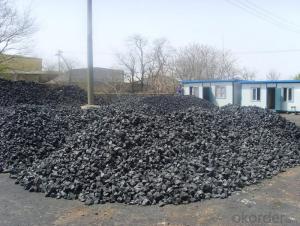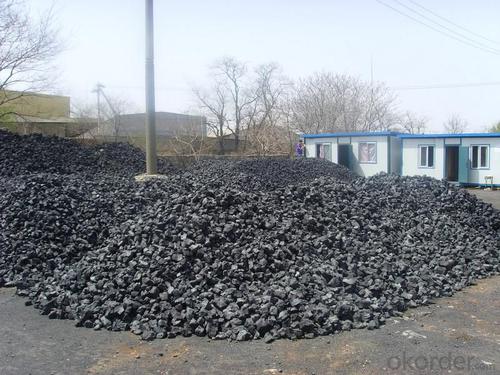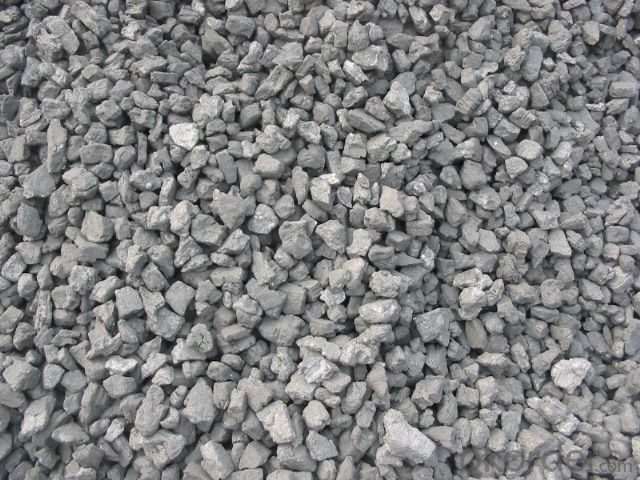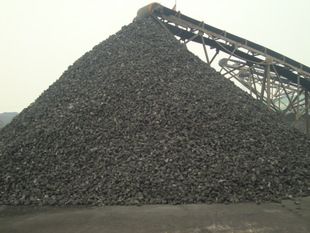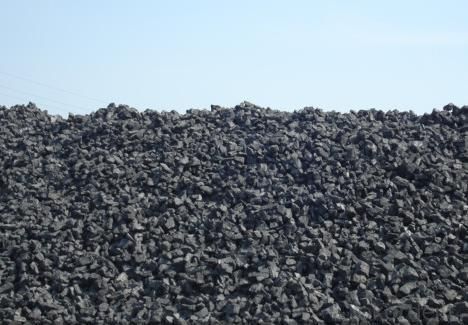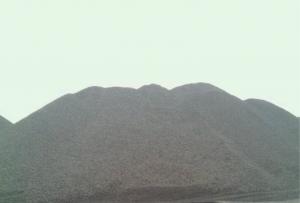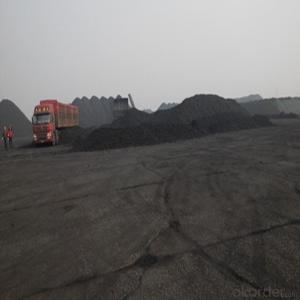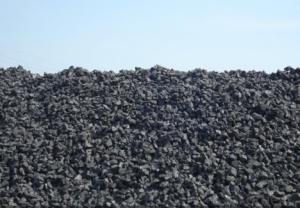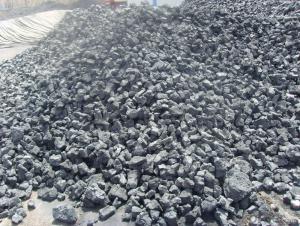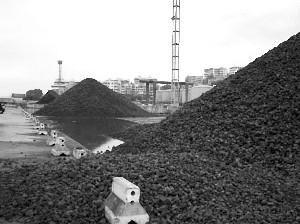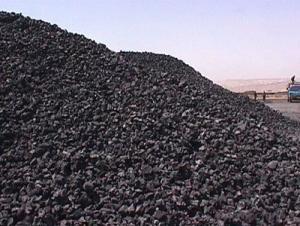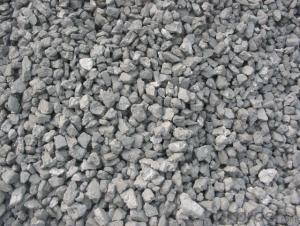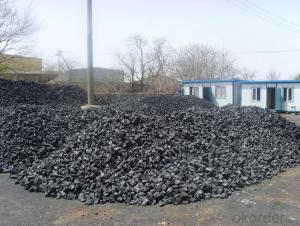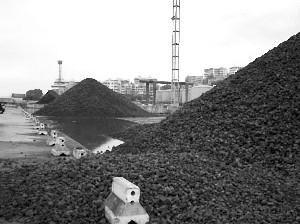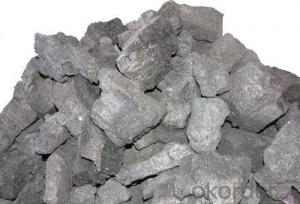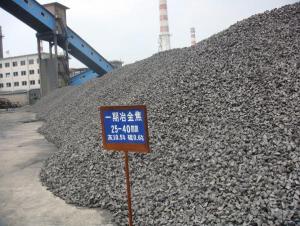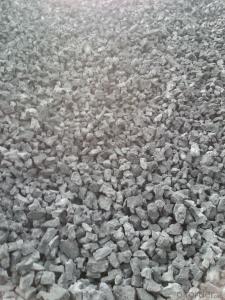CNBM Nut Coke with Normal Phosphorous
- Loading Port:
- Tianjin
- Payment Terms:
- TT OR LC
- Min Order Qty:
- 100 m.t.
- Supply Capability:
- 3000 m.t./month
OKorder Service Pledge
OKorder Financial Service
You Might Also Like
1. Structure of Nut Coke with Normal Phosphorous Description:
Coke is made by high temperature metallurgical coke for blast furnace smelting, casting and gasification. Occurring in the process of coking after recovery and purification of coke oven gas is a high calorific value of fuel, is an important industrial raw material in organic synthesis.
Coke is mainly used for blast furnace ironmaking and used for copper, lead, zinc, titanium, antimony, mercury and other non-ferrous metal smelting of blast furnace, reducing agent, compound and the function of stock column frame.
Blast furnace with Coke instead of charcoal, which laid a foundation for the large-scale of modern blast furnace, is a major milestone in the history of metallurgy.
2. Main Features of the Nut Coke with Normal Phosphorous:
• Quality assurance
• Mutual benefit
• Preferential price
• Various choice
3. Nut Coke with Normal Phosphorous Images:
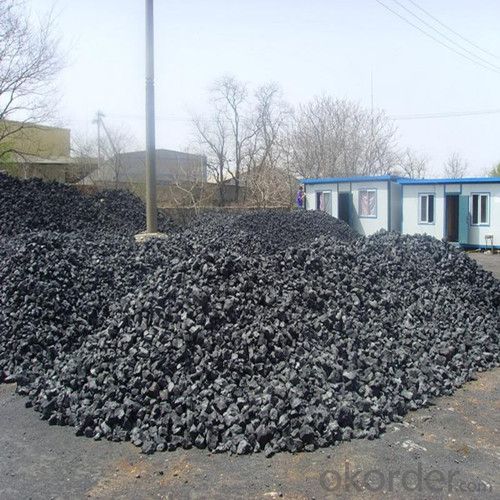
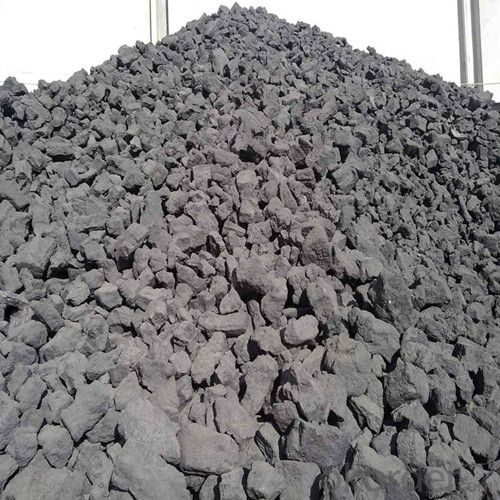
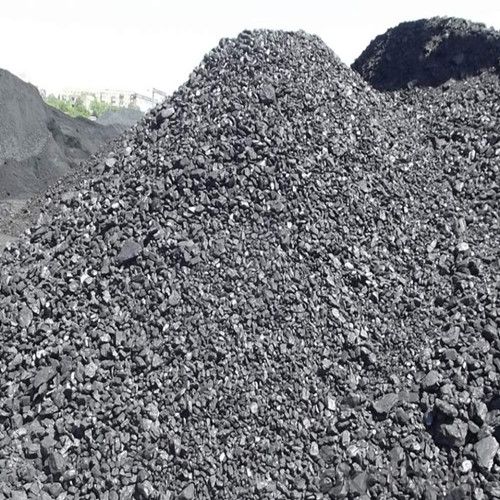
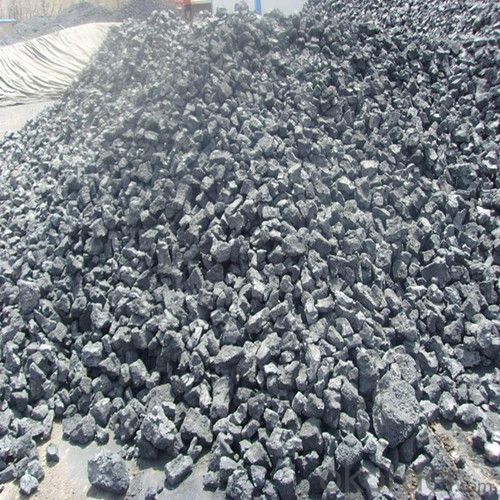
4. Nut Coke with Normal Phosphorous Specification:
Parameters | Guarantee | Rejection |
Total Moisture ( As received basis ) | 8% max | |
Ash ( dry basis ) | 12.5% max | > 13.5% |
Volatile Matter ( dry basis ) | 1.5% max | > 1.8% |
Sulphur ( dry basis ) | 0.70% max | > 0.80% |
Phosphorus ( dry basis ) | 0.035% max | > 0.045% |
Size 10-30 mm | 90% min | |
+30 mm | 5% max | > 8% |
-10 mm | 5% max | >8% |
5. FAQ
We have organized several common questions for our clients,may help you sincerely:
1) How to guarantee the quality of the products?
We have established the international advanced quality management system,every link from raw material to final product we have strict quality test;We resolutely put an end to unqualified products flowing into the market. At the same time, we will provide necessary follow-up service assurance.
2) What are coke's main physical properties?
The average heat capacity is 0.808 kj/(KGK) (100 ℃), 1.465 kj/(KGK) (1000 ℃)
Thermal conductivity is 2.64 kj/(MHK) (room temperature), 6.91 kj/(MHK) (900 ℃);
Ignition temperature (air) is 450-650 ℃.
3) How about your company?
Our company began to export coke when China cancelled 40% of coke export tariffs and quotas on January 1, 2013. We export many kinds of coke, such as CSR60 % and CSR 62% metallurgical coke (met coke), the NUT coke of 20 to 50 mm, coke breeze of 3 to 6 mm, and so on.
- Q: Ask: coking coke tower tower and what is the relationship?If you can give a working principle to explain what is better!Coking tower in oil coking plant
- Coking plant production capacity on the exclusion of the tower is also on the two: first, the coal tower; the two is coke bin;
- Q: What is the reasonable standard of volatile content of coke
- The sulfur content in coke: sulfur is a harmful impurity of iron smelting, which reduce the quality of pig iron. The sulfur content in the pig iron is more than 0.07%.
- Q: The total amount of heat released by the fully burnt 200g coke is 60% by mass of 10kg water absorption [q coke =3.0 * 107J/kg, C water =4.2 * 103J/ (kg = C)], q:(1) how much heat is absorbed by water?(2) if the initial temperature of water is 10 degrees C, then, after absorbing heat, the temperature will rise to how much?
- Dry water temperatures:Delta t=Q ceilingC water m water=3.6 x 106J4.2 x 103J/ (kg * c) * 10kgC = 85.7,At the end of a water temperature t=t0+ t=20 C +85.7 =105.7 oc,
- Q: After the long-term use of non stick pan, oil stains can not be effectively removed, over a long period of time in the non stick coating on the formation of a layer of coke, the effect of losing non stick. As a result of this layer of coke is relatively dense and smooth, scouring cloth has been ineffective, steel ball can not be used to damage the coating, what chemical or physical methods to remove this layer of coke?
- Four, wash the metal wire ball friction force discoloration, and always use water to clean out the dirt.So that the whole place to restore the original black dye can be done.Water sandpaper rubbing can of course, but in the end to more than 1000 mesh water sandpapering. Another 100 clean cloth polishing line. The coke on the stove can only be removed by hand.Finally, wash the rice cooker, stove, as well as your tired hands, thoroughly washed several times. Here, everything is back to normal, as if nothing had happened.
- Q: What is the difference between coking coal and coke
- Coking coal is an essential raw material for the production of coking coal, coking coal is one of the main uses of coke, coke is full of coking coal, coking coal is necessary for coke.
- Q: Coke indicators are divided into grades
- Coke crushing strength refers to coke can resist foreign impact force without ability along cracks or defects at the broken, represented by the M40 value; wear strength of coke coke refers to the ability to resist external friction without surface of glass forming debris or powder, said M10. The cracking degree of coke affects the M40 value of its breaking strength, and the pore structure of coke affects the M10 value. There are many methods for determination of M40 and M10 value method, commonly used in our country the German migon drum test.
- Q: What is the difference between coke and carbon residue? Coke is a high-temperature refining, carbon residue can be used for civilian fuel it?
- Gasification coke, which is used in the production of coal gas, is mainly used in the fixed bed gas producer with solid slag, as the raw material for gasification, producing CO and H2 as the combustible component:C+O2 - CO2+408177KJCO2+C - 2CO-162142KJC+H2O - CO+H2-118628KJC+2H2O - CO2+2H2-75115KJ
- Q: Can the sulfur content of coke affect the casting process of nodular cast iron at 0.65?
- If the control is not good, the manganese content in the molten iron can be increased by increasing the reagent
- Q: Purpose of using coke in iron making raw materials
- It can capture the oxygen atoms in iron oxide or magnetic iron oxide to form carbon dioxide. The reaction equation is as follows:3C+2 (Fe2O3) = ==3 (CO2) +2Fe at high temperature2C+ (Fe3O4) = ==2 (CO2) +3Fe at high temperature
- Q: Mechanism of carbon and coke is not the same as the price which high?
- Stick out almost all with crack. And they say the yield of 180 kg / hour also is very different, not only the normal production hours when the output of 100 kilograms. I had also directed his blog to the thought, the personality is good. It seems that I really fooled. Later on the Internet listen to friends that they and Beijing Shouke, and sell equipment are a group of Shouke and powerful equipment are factory Hebei Ba Chau do, the technician will not help garbage shit escape love who are also the factory to help Hebei Ba Chau cultivated. It is the general black crow. The wolf escaped, and ventured into the mouth. I put my story and I just hope I don't have the same people cheated, Juyuan suzerain is the biggest liar. Equipment market is too dirty, the bone charcoal mechanism shall not ah!
Send your message to us
CNBM Nut Coke with Normal Phosphorous
- Loading Port:
- Tianjin
- Payment Terms:
- TT OR LC
- Min Order Qty:
- 100 m.t.
- Supply Capability:
- 3000 m.t./month
OKorder Service Pledge
OKorder Financial Service
Similar products
Hot products
Hot Searches
